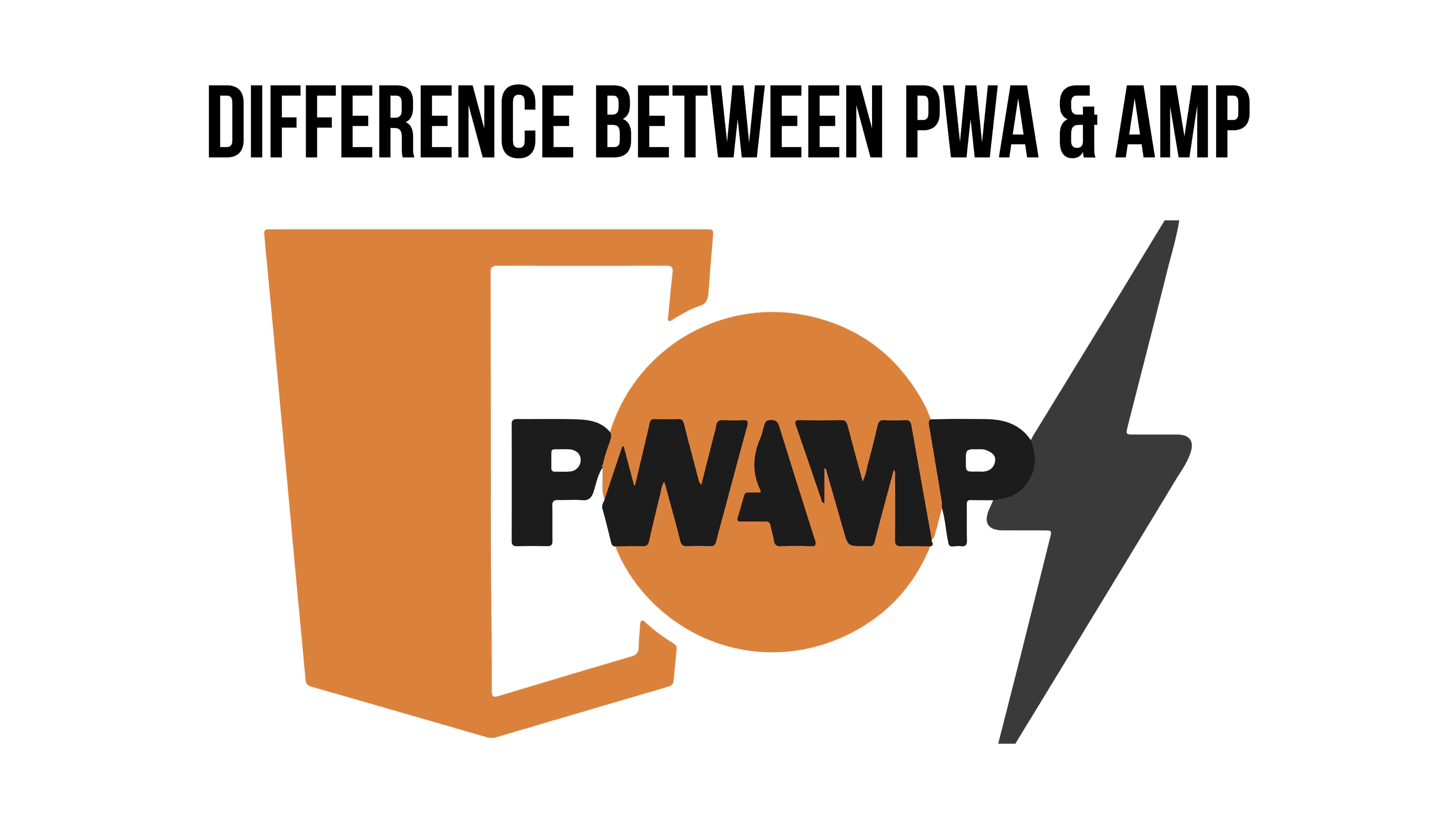Over the last 10 years, the number of mobile users increased significantly, and their number will be a little less than 4 billion people. And every month we get more apps that help people to simplify their life. And now we want to discuss what AMP and PWA abbreviations mean? What are technologies, that hide under these strange letter combinations? And above all: what can their implementation bring us?

PWA: Progressive Web Apps
PWA (Progressive Web App) is a type of application that is like a combination of web and native app.
It behaves like a native mobile application but uses web technologies (HTML, CSS, JavaScript). They are adapted to different operating systems. PWA combines speed of websites and features of native apps.
To be named PWA, an app should be:
1) reliable – display quickly in all situations;
2) fast – display quickly all the images and other content pieces;
3) engaging – these apps are more user-friendly, that attracts new users;
4) secure – always served by HTTPS.
We have some articles about PWA, their benefits, frameworks, and what is the future of PWA, just click here.
👉A really interesting type of app, isn’t it? If you want to know, PWA VS RWD in 2020 , read our previous post👈.
👉Or, if you are new in topic of PWA, you can read “What is PWA?”.👈
AMP – Accelerated Mobile Pages
AMP (Accelerated Mobile Website) is a technology developed in an open-source environment, supported by Google, its goal is to enable quick loading of websites on smartphones and tablets.
Originally, it was targeted at mobile websites, but can be used for any type of website. AMP technology is designed to reduce the loading time of sites. As statistics show, about 40% of mobile site users end their sessions if the page takes more than 3 seconds to load. By using scripts based on HTML AMP, you can significantly speed up the loading time.
According to analyzes, user involvement on AMP pages is higher than on other pages. The goal of AMP is to enable quick loading of sites on mobile devices. Technology developers are trying to simplify the source code of the site as much as possible, so the usage of JavaScript code in AMP is limited. What’s more, users who want to quickly browse the Internet on a mobile device can use the Google AMP browser.
The solution has also been introduced in one of the most popular CMS – on WordPress. The plugin automatically adds functionality to the site.
What is more, every owner of the AMP website has the ability to check its correctness and make sure that its configuration allows it to be displayed in search results. This can be done using the AMP Test.
AMP is really a standard for building websites that should load quickly on mobile devices. Google once rightly noticed that many websites are still irritatingly slow on mobile phones, and decided to do something about it.
Therefore, pages compliant with the AMP standard are slightly simpler, but above all noticeably faster versions of mobile pages.
This is due to the usage of three elements:
1) AMP HTML, which is in fact “ordinary” HTML with some restrictions to improve the speed of pages, and additional elements (so-called AMP HTML components);
2) AMP JS, a JavaScript library that implements AMP’s “best practices” related to performance, manages the loading of resources and provides AMP components, which is to ensure fast page rendering;
3) AMP Cache, a content distribution network based on proxies that download AMP HTML pages caches them and automatically improves their performance. In addition, AMP Cache is equipped with a validation system that verifies whether the page will work properly, is not dependent on external resources, and whether the tags comply with the AMP HTML standard. However, the usage of AMP Cache is not mandatory.
Is AMP for everyone?
Theoretically, it can be used by everyone, cause there are a lot of plugins (for WordPress, etc). That’s really great solutions for people, who are not familiar with HTML and JavaScript. They can also be easily tested using up to two dedicated tools ( AMP Test from Google for ready pages).
AMP is also designed to provide a more friendly UX. By reducing unnecessary elements on the page, browsing becomes much more intuitive, and users focus more on content than on the interface layout. Blogs and information portals, whose main task is to provide readers with the best content, benefit the most. In combination with texts created for SEO, this gives very positive results.
Due to the fact that AMP uses various elements of browsers and servers, faster loading of pages is possible. Due to saving the pages in the cloud or the cache of another entity, the process of loading the site is relieved.
But what is about their popularity?
AMP gains its popularity, but is not so widely used as PWA( they are really in trend now). Thanks to Accelerated Mobile Pages, you can develop quick pages for use in the desktop version, as well.
It’s needless to say, that in mobile searches, AMP performs better than websites with RWD (Responsive Web Design). Thanks to the link rel = “amphtml” tags on the canonical versions, AMP pages can be easily indexed.
In turn, convergence, bounce rate or an average number of page views in a session were able to improve (sometimes symbolically, sometimes spectacularly) for various projects discussed on SMX, as well as slightly worse.
The distinctive characteristics of AMP are:
1) lack of cookies (can appear some issues with remarketing etc)
2) difficulties with analytics (but with new updates, Google Analytics has some special solutions).
Thus, it can be useful for some types of content (text articles) that can bring traffic, but it’s up to you what to choose.
So, jump to the conclusion, it’s needless to say that each kind of app has its own pros and cons. And it’s up to your decision and goal, but do not forget about your target audience and their requirements. But, if there are any questions, just contact us. And if you are a talented developer, contact us as well and join our team!


